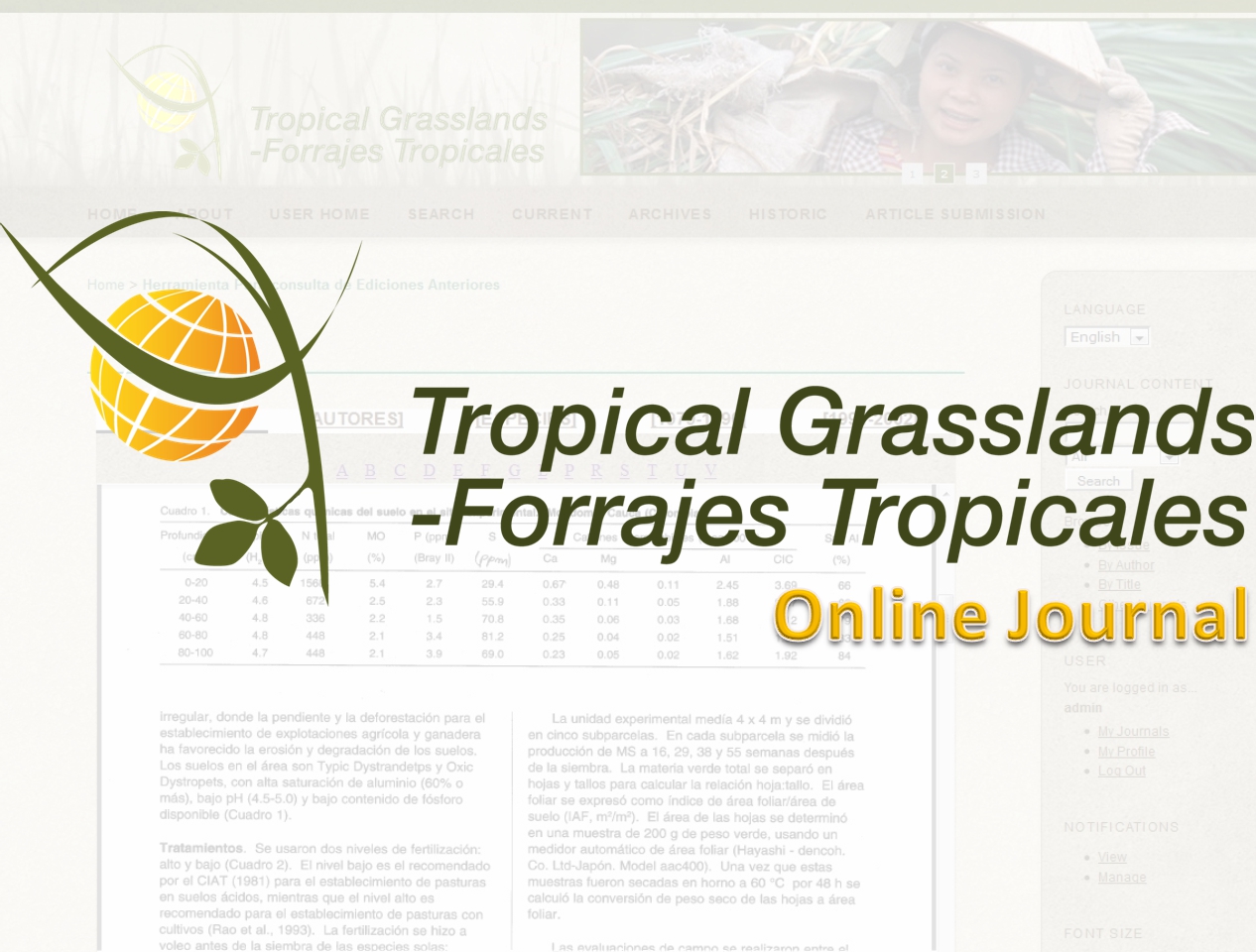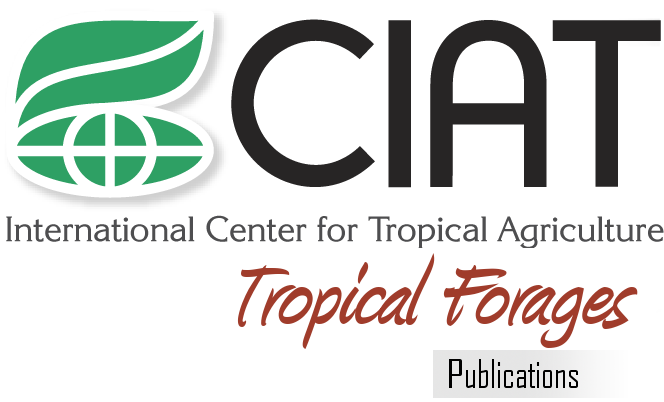|
|
Tools
|
Allowing user interaction
|
|
|
 |
|
Tropical Grasslands - Forrajes tropicales [Online Journal] |
|
Institution/Author:
Tropical Forages Program |
|
Publisher:
CIAT |
|
Year:
2012 |
|
Tropical Grasslands – Forrajes Tropicales is an international, bilingual, peer-reviewed, open-access, online journal created in 2012 as the result of a merger of the former journal Tropical Grasslands, published from 1967 to 2010 by the Tropical Grassland Society of Australia Inc., and the former journal Pasturas Tropicales, published from 1979 to 2007 by the International Center for Tropical Agriculture (CIAT, its Spanish acronym). The Journal is published three times per year by CIAT in Cali, Colombia.
|
|
 |
|
Tropical Forages: An interactive selection tool |
|
Institution/Author:
Tropical Forages Program |
|
Publisher:
CIAT |
|
Year:
2001 |
|
A collaborative effort between CIAT, CSIRO Sustainable Ecosystems, the Department of Primary Industries & Fisheries Qld, and the International Livestock Research Institute (ILRI). The Tropical Forages database is a powerful tool for selecting forage species suitable for local conditions in the tropics and sub-tropics. It is invaluable for agricultural researchers and extension officers involved in improving animal production. This tool will allow you to:
- Identify forage species suitable for your climate, soils, production system, and management via a selection tool built on Lucid™.
- Access comprehensive information on these species with details of adaptation, uses and management of forage species, cultivars, and elite accessions.
- View images of the plants and their use.
- Search a comprehensive database of scientific references with abstracts.
|
|
 |
|
Plant Genetic Resources |
|
Institution/Author:
Tropical Forages Program |
|
Publisher:
CIAT |
|
Year:
2001 |
|
This set of three databases covers selected accessions of common bean (Phaseolus vulgaris), cassava (Manihot esculenta Crantz), and forage germplasm held in the FAO- designated collection at CIAT. It includes passport data, and characterization and evaluation information. Through these databases, which are accessible through Internet, you can make on-line requests for germplasm you need. The Web site also provides, in English and Spanish, an introduction and additional information about the databases. |
|
 |
|
Forrajes Tropicales: Base de Datos de Recursos Genéticos Multipropósito, Versión 1.0 |
|
Institution/Author:
Tropical Forages Program |
|
Publisher:
CIAT |
|
Year:
2002 |
|
[Tropical Forages Database] This CD-ROM offers cumulative information on CIAT's tropical forages project. Data are presented on Characterization of Materials, Evaluating and Selecting Materials, and germplasm evaluation networks for regional adaptation trials, establishment phase, and production phase. Information on genotype ? environment interaction is also provided for the Arachis and Desmodium spp., together with information on nutritional requirements and pests and diseases. A catalog on rhizobia strains is included. |
|
 |
|
Especies Forrajeras Multipropósito |
|
Institution/Author:
Peters M.; Franco LH.;Schmidt A.; Hincapié B. |
|
Publisher:
CIAT |
|
Year:
2002 |
|
Este boletín se desarrolló como parte del proyecto “Investigación Participativa Agropecuaria en Acción: Selección y Uso Estratégico del Germoplasma de Forrajes Multipropósito por Pequeños Productores en los Sistemas de Producción de Laderas de Centroamérica”, coordinado por el Centro Internacional de Agricultura Tropical (CIAT) y ejecutado por un grupo de científicos de instituciones no gubernamentales y de instituciones nacionales de investigación de Costa Rica, Honduras y Nicaragua, de la Universidad de Hohenheim de Alemania e instituciones internacionales. El proyecto es financiado por la BMZ/gtz (Bundesministerium für Wirtschaftliche Zusammenarbeit und Entwicklung/Deutsche Gesellschaft für Technische Zusammenarbeit) de Alemania, a la cual se agradece su apoyo y colaboración.
El proyecto tiene como meta contribuir a que los pequeños productores de las laderas de América Central integren tecnologías novedosas basadas en forrajes multipropósito, en sus sistemas de producción para mejorar su seguridad alimentaría, la generación de ingreso, la eficiencia en el uso de la tierra, y la utilización y conservación de los recursos naturales. |
|
|

 Contact
Contact



